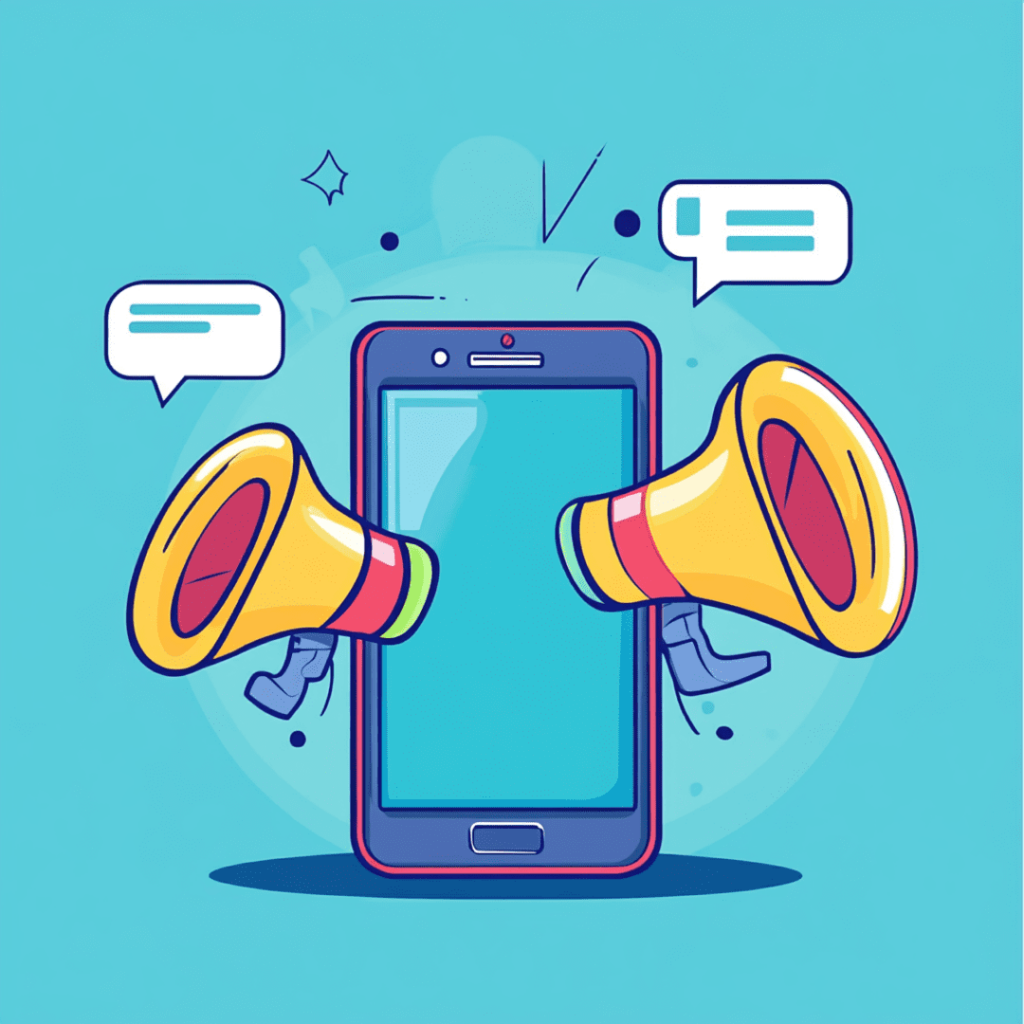LinkedIn is a powerful platform for businesses aiming to establish professional connections and drive B2B sales. It offers various advertising options that can help companies generate more leads.
In this post, we’ll focus on one key advertising feature — the LinkedIn Audience Network. We’ll break down what it is, how it operates, whether it’s right for your business and share some best practices for using it effectively. Let’s get started!

What Is The LinkedIn Audience Network?
The LinkedIn Audience Network is a feature that allows you to display LinkedIn ads on websites partnered with the platform. In other words, it helps companies reach a wider audience by going beyond the LinkedIn platform and using partner websites to promote the ads.
Essentially, this helps to increase your ad reach and allows you to engage with your target audience even if they don’t use LinkedIn. One thing to note is that this is just a feature and not an advertising type on its own. You enable it to run in conjunction with other LinkedIn ad types.
For example, if you were running a sponsored content campaign, you could activate this feature to show the ad on other third-party websites. This means it will use the same bid type, ad budget and targeting criteria you chose for the campaign. Ensuring that the ad is still displayed to the same audience that it would have been on LinkedIn.
In addition, as the LinkedIn Audience Network is a feature and not an ad type, no extra cost charges are incurred for enabling it. Thus making it a valid option to consider when testing different campaigns or when interested in reaching a larger group of people.
One thing to keep in mind is that this feature does not work with dynamic and text ads. You can only use it with sponsored content campaigns — a video, carousel, or single-image ad.
If you are new to LinkedIn advertising and wondering whether this is an option your business should consider, Snowball Creations is here to help. We are a paid ad agency with years of expertise in B2B advertising. Contact us today and let us guide your company on the correct marketing path for your business.
What Are The Positives of The LinkedIn Audience Network?
The LinkedIn Audience Network promotes your ad on sites that are partnered with the platform, increasing the overall reach of your campaign. Here is a quick look at some of the benefits of enabling this feature:
- Reaching a wider audience: This is the main benefit of the audience network, it allows marketers to extend the visibility of their ads beyond the LinkedIn platform. Enabling users to see it while they browse other third-party websites.
- Precise targeting: Another attractive advantage of using this feature is that you can employ the same targeting options to engage with users on the partnered websites. This includes targeting criteria such as job title, industry, company size, education and location.
- Cost-effective: The LinkedIn Audience Network allows businesses to expand their reach with minimal extra investment, making it an extra cost-effective method of reaching a larger audience.
- Ease of use: As the LinkedIn Audience Network is a feature instead of an ad type, it is easy to set up. In other words, Advertisers don’t need to create separate campaigns for the Audience Network and can instead just activate the feature to take effect.
- High-quality websites: LinkedIn has made a point of only allowing high-quality websites and apps to be part of the audience network. This ensures that advertisers have peace of mind that prospects are seeing their ads on premium websites instead of ones that can cause damage to the brand’s reputation.
The Negatives of The LinkedIn Audience Network
As with most things, when there are positives there are usually negatives as well. Here is a quick overview of some of the downsides to using the LinkedIn ads audience network:
- Lack of partner site data: While LinkedIn itself does provide some analytics about the audience network, it is nothing compared to the data you would receive on the native platform. This makes it difficult to see specific insights into which websites/apps are driving traffic leaving you somewhat unsure of how the ads are performing on the partnered websites.
- Less control over ad placement: Although LinkedIn allows advertisers some control over ad placement thanks to exclusion options, they still don’t have full control over where the ads will appear. This can result in ads being shown on websites that do not align with the brand’s core values.
- Users not in a work-related frame of mind: As LinkedIn is a business platform, the users on it are in a working mindset. However, the same can not be said for the audience network as potential prospects could encounter the ads while casually scrolling the web. This difference in user intent could result in your ads seeing lower engagement and not performing as well as they would on the native platform.
- May attract different audiences: While you can still use LinkedIn’s precise targeting, the third-party website that shows the ad could attract a different audience that is not relevant to your business. This could lead to users clicking on your ad solely based on curiosity, resulting in a larger number of clicks that don’t convert.
- Ad fatigue: Seeing the same ads on several websites could lead to ad fatigue. This overexposure can then cause users to tune out your messages which reduces the campaign’s overall effectiveness.

Should Businesses Use The LinkedIn Audience Network?
The truth is that the answer to this question depends on the company’s goal, its risk tolerance and the objective of their campaigns. There are several situations where the audience network makes sense.
On the other hand, the same can be said for the reasons not to use it. For instance, if a business is solely interested in increasing visibility, the audience network might be a good option to consider even if user intent is on the lower side. The reason for this is that the company might be running top-of-funnel campaigns.
This is where the primary intention is to increase brand awareness and spread the word about the company and its services. At this stage, the goal has nothing to do with conversion tracking but only about introducing the business to potential prospects. In this scenario, the LinkedIn audience network is a solid option to consider.
However, if the business is further along and is more focused on making every click count, then the audience network might be something they want to avoid. The best thing to do is to clearly examine the goal you want to reach and then weigh it against the benefits as well as the downsides of the network. Taking this holistic approach will ensure that you get the best possible results no matter the choice you decide on.
3 Best Practices for LinkedIn Audience Network Ads
If you’ve carefully considered your options and decided to use the LinkedIn Audience Network, there are some best practices that can help improve your chances of success. Here are a few tips to get you started:
1. Exclude Low-Quality Websites
One of the best practices is to use a block list. This way you have somewhat more control over where your ads are displayed which helps to increase brand safety. For instance, you can create a list of low-quality websites to exclude and add that to your campaign. This will ensure that when your ad shows up on a third-party site, the chances of the partner site matching your brand message are a bit better.
2. Create Standalone Audience Network Campaigns
Another useful strategy is to run separate campaigns for the Audience Network, making it easier to track and evaluate campaign performance of each one individually. This provides you with a little more control in managing each campaign compared to what you would have had if you left it on default with your normal LinkedIn campaigns.
3. Use Them For Retargeting Campaigns
Using the LinkedIn audience network for retargeting campaigns makes a lot of sense. As the name suggests, with this type of campaign, you retarget users who have already come in contact with your brand. Thus, these users are more inclined to engage with your ads on third-party sites as they are already familiar with your company.

Using The LinkedIn Audience Network To Increase Brand Awareness
The LinkedIn audience network can be a great way to increase the reach of your B2B campaigns but it does come with some downsides that businesses need to carefully consider. These include a lack of partner site analytics, ad fatigue and less control over where the ads are placed.
Whether businesses should use the audience network will depend on several factors such as the company’s goal, campaign objective and it’s risk tolerance. While it might be a beneficial move that can result in large brand exposure, it is a decision that businesses need to carefully consider.
If you are still unsure of whether to use the feature or which direction to take your LinkedIn advertising, our experts are here to assist. Fill in the contact form below and let us help you make the most of your marketing efforts.